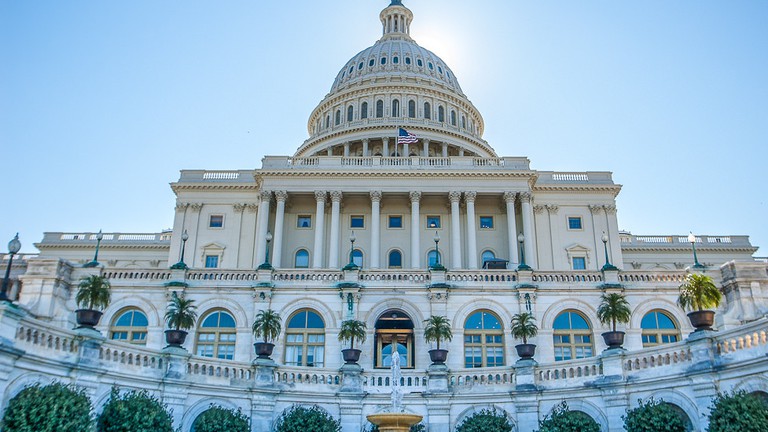This post was originally published on MyPatientRights.org. Please visit My Patient Rights if you’ve been denied healthcare.
While what we know about COVID-19 is still evolving—here are the latest federal, state, and regulatory policies related to COVID-19.
Federal Legislative Actions on COVID-19
March 27th: The House of Representatives passed the COVID-19 relief CARES Act and the president signed the bill into law.
- Comprised of over $2 trillion in financial relief for many sectors of the US economy and American families facing economic insecurity caused by COVID-19, the CARES Act contains several critical provisions, including:
- Providing direct financial relief for Americans who earn less than $99,000 per year;
- Providing loans for small businesses that create an incentive for them to maintain their staffing levels during the COVID-19 outbreak;
- A delay of the tax filing deadline for 2019 tax returns from April 15, 2020 to July 15, 2020;
- A historic expansion of unemployment benefits, increasing both maximum benefit amounts and the length of unemployment benefits;
- A requirement for the national strategic stockpile to include personal protective equipment, ancillary medical supplies, and other necessary health care supplies;
- Economic assistance to front-line health care workers to assist them during the COVID-19 outbreak.
For more information on the CARES Act, please visit congress.gov
March 25th: The Senate unanimously passed the COVID-19 CARES Act—a formidable stimulus package intended to address shockwaves that have been felt through the United States by the rapid spread of COVID-19
March 19th: Senate Majority Leader introduced a third relief package, titled the Coronavirus Aid, Relief, and Economic Security (CARES) Act.
- The bill builds upon earlier versions of the CARES Act and is intended to be a third round of federal government support in the wake of the COVID-19 public health crisis and associated economic fallout
March 18th: The President signed into law a second coronavirus relief package, titled the Families First Coronavirus Response Act.
- This package provides over $850 billion in relief to Americans, including:
- paid sick leave
- nutrition assistance
- expanded unemployment benefits
- free coronavirus testing for all Americans regardless of insurance status
March 6th: The President signed into law the Coronavirus Preparedness and Response Supplemental Appropriations Act, the first federal relief package.
- The package authorizes $8.3 billion in additional funds to federal agencies, including:
- $3.1 billion in additional funds for the United States to purchase vaccines, therapeutics, and diagnostics
- $300 million to the Centers for Disease Control and Prevention for global disease detection and emergency response
- $836 million to the National Institutes of Health to prevent, prepare for, and respond to coronavirus
Federal Regulatory Activity on COVID-19
March 20th: the DEA announced that DEA-registered practitioners could prescribe controlled substances to patients for whom they have not conducted an in-person medical evaluation, provided that certain conditions are met
March 18th: The Centers for Medicare and Medicaid Services (CMS) announced that catastrophic health plans could offer coverage of services associated with the diagnosis and treatment of COVID-19 prior to plan enrollees meeting their deductibles
March 17th: CMS approved a 1135 waiver for Washington’s Medicaid program, and on March 19th, CMS approved a 1135 waiver for Florida’s Medicaid program
- Available blanket waivers include waivers for certain requirements related to skilled nursing facilities, critical access hospitals, housing acute care patients in excluded distinct part units, durable medical equipment, and telehealth, among others.
March 13th: CMS released a notice in response to the COVID-19 Emergency Declaration. In it, CMS explained that it would take proactive steps through 1135 waivers and rapidly expand the Administration’s aggressive efforts against COVID-19
- Available blanket waivers include waivers for certain requirements related to skilled nursing facilities, critical access hospitals, housing acute care patients in excluded distinct part units, durable medical equipment, and telehealth, among others
March 9th: The FDA and the FTC issued warnings to seven companies selling fraudulent products that claimed to treat or prevent COVID-19. At this time, there is no known cure for the virus.
- Since then, several companies selling cannabidiol (CBD) products have made similar misleading claims.
State Action
Though the federal government leads the national response to the COVID-19 pandemic, state and local departments remain on the front lines. State or public health emergency declarations have been issued in every state and territory.
- California, Florida, New York, and Washington have experienced highest concentrations of confirmed COVID-19 cases and deaths by the disease
- Two states, Massachusetts and New Mexico, have implemented requirements for health plans to waive cost-sharing for COVID-19 treatment
- Seven states—Kentucky, Maine, Massachusetts, New Hampshire, Pennsylvania, Rhode Island, and Washington, have waived prior authorization requirements for COVID-19 testing. Two states, Massachusetts and Washington, have waived prior authorization requirements for COVID-19 treatment
- Another 11 states have required health plans to allow enrollees to refill their prescriptions early
- Eight states and the District of Columbia have opened a special enrollment period for consumers to enroll in a health insurance plan. This includes California, Connecticut, Maryland, Massachusetts, Nevada, New York, Rhode Island, and Washington.
At least 32 states, Washington, D.C., and Puerto Rico have introduced legislation to support state action related to COVID-19. For the most updated information on state COVID-19 legislation, visit the National Conference of State Legislatures.
For state-specific resources, visit our COVID-19 Resources.
